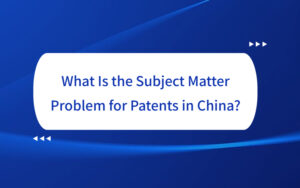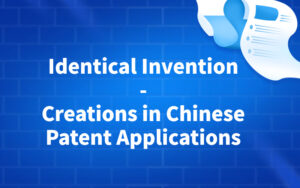The Patent Reexamination System for Chinese patent applications
The patent reexamination system for Chinese patent applications is a remedy provided to the applicant when the patent application is rejected. If the applicant is not satisfied with the decision of rejection, he/she may initiate the reexamination procedure. The patent reexamination system is somehow similar to the Request for Continued Examination (RCE) of the US patent system in the sense that both systems are continuation of the examination procedure of a patent application. Of course, the reexamination system and the RCE system are quite different in terms of specific rules. We will provide a detailed introduction of the reexamination system of China.
Patent Reexamination Procedure
According to the Article 41 of the Chinese Patent Law, where an applicant for patent is not satisfied with the decision of the Patent Administration Department under the State Council (hereafter referred to as Patent Administration) rejecting the application, the applicant may request the Patent Administration to make a reexamination.
The workflow chart is shown as follows:

Request for Patent Reexamination
A reexamination request may be filed includes the decision rejecting the application during the preliminary examination and substantive examination procedures. Where a petitioner does not file a reexamination request with respect to the decision of rejection made by the Patent Office, the reexamination request will not be accepted.
Time limit to file a reexamination request is within three months after receiving the Rejection Decision.
Fees for Requesting Patent Reexamination
The petitioner shall pay the reexamination fee within three months from the date of receipt of the rejection decision. The reexamination fee is 1,000 RMB for invention patent, 300 RMB for utility model patent and 300 RMB for design patent.
Format of Documents
The petitioner shall submit request for reexamination and explain the causes therein, and attach the relevant evidence if necessary.
The petitioner shall use the form of Request for Reexamination prescribed by the Patent Administration, and fill the items in accordance with the notes.
The petitioner making the request may amend its or his patent application at the time when it or he requests reexamination or makes responses to the notification of reexamination of the Patent Administration. However, the amendments shall be limited only to remove the defects pointed out in the decision of rejection of the application or in the notification of reexamination.
Notification of Formal Examination
After formal examination, if the request for reexamination is considered in conformity with the relevant provisions of the Patent Law and its Implementing Regulations and these Guidelines, the Patent Administration shall issue Notification of Acceptance of Request for Reexamination to notify the petitioner.
However, if the request for reexamination is considered not in conformity with the relevant provisions and needs to be rectified, the Patent Administration shall issue Notification to Make Rectification, and invite the petitioner to make rectification within the specified time limit from the date of receipt of the notification.
Where the petitioner makes a response to the Notification to Make Rectification, he shall submit the form of Rectification for Reexamination or Invalidation Procedure prescribed by the Patent Administration and the rectified documents.
Interlocutory examination
Before the application is collegiate examined, the Patent Administration shall transfer the request for reexamination (including any proof document and the amended application document attached thereto) having passed the formal examination to the previous examination department, which made the Rejection Decision for interlocutory examination.
The previous examination department will provide its opinion on interlocutory examination and make a Note of Interlocutory Examination Opinion. There are three types of interlocutory examination opinions:
First, the request for reexamination is allowable, and the Rejection Decision is agreed to be revoked;
Second, the amended text of the application submitted by the petitioner has overcome the previous defects, and the Rejection Decision is agreed to be revoked on the basis of the amendments; and
Third, the observations and the amendments submitted by the petitioner are not sufficient to revoke the Rejection Decision, and the Rejection Decision is maintained.
If the application receives the first or the second opinion, the Reexamination and Invalidation Department will not conduct collegiate examination. The previous department will restore the examination procedure accordingly. If the application receives the third opinion, i.e., the rejection is maintained, the Reexamination and Invalidation will conduct collegiate examination.
Collegiate examination
During collegiate examination, the panel may conduct examination in written form, by oral proceedings, or in both ways. After examination, the panel shall issue Notification of Reexamination. The Notification includes the following types:
First, the Rejection Decision is intended to be upheld;
Second, the Rejection Decision can be revoked on the condition that the petitioner makes amendments to the application document in accordance with the relevant provisions of the Patent Law, its Implementing Regulations and Examination Guidelines;
Third, further evidence or explanation is required to be submitted by the petitioner; or
Forth, new grounds or evidence that have not been provided in the Rejection Decision need to be introduced.
Where the panel issues Notification of Reexamination, the petitioner shall respond in written form with respect to the defects indicated in the notification within one month from the date of receipt. If the petitioner fails to respond in written form within the time limit, the request for reexamination shall be deemed withdrawn.
Judicial remedy
Where a petitioner is not satisfied with the reexamination decision made by the Patent Administration, he/she may file a lawsuit against the Reexamination Decision within three months of receipt of the decision. If the patent applicant fails to file a lawsuit within the prescribed time limit, the Reexamination Decision shall take effect.
Questions frequently asked by foreign applicant
- May a petitioner submit a request for reexamination by himself, without entrusting a patent agency?
For foreign applicant, it is advisable to appoint a Chinese patent agency. According to relevant rules, if the petitioner is a foreigner, foreign enterprise or other foreign organization having no habitual residence or business office in China, but fails to appoint a patent agency and fails to make rectifications within the specified time limit, the examination board will issue a Notification of Nonacceptance of Request for Reexamination during the formal examination procedure.
- Can I present evidence in a foreign language?
If the party concerned submits a piece of evidence in a foreign language, he/she needs also submit the Chinese translation. If the Chinese translation for the evidence has not been submitted within the time limit, the foreign language evidence shall be deemed not to have been submitted. Where there is a dispute over the Chinese translation, if the both parties have reached an agreement as to the translation, the agreed translation shall be used; if the both parties cannot reach an agreement as to the translation, the Patent Administration may entrust a translator to translate if necessary.

